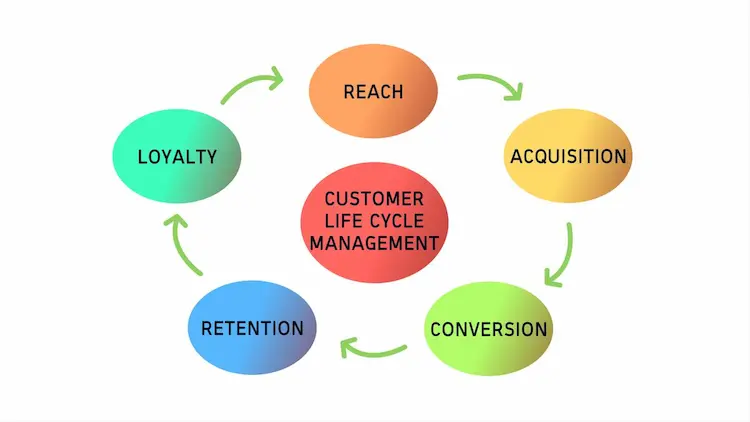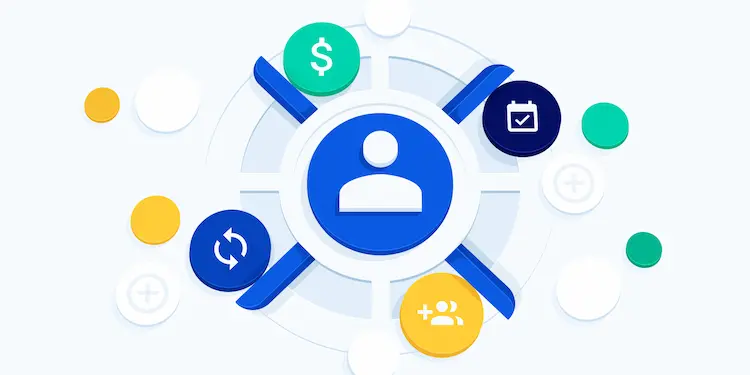The long-term success of a business depends on a strong and stable customer base. However, building and maintaining customer relationships is more challenging than it seems.
In today’s competitive business landscape, business owners must understand that customers are never the same. Some may be visiting the website for the first time, some may be familiar with the brand, and some might be frequent buyers who have enjoyed their services for some time.
The gist is that you never really know the audience that will interact with your business.
Customer lifecycle marketing deals with this reality. It can help you build your business to entice customers from the get-go, letting them experience your service and transform them into loyal consumers.
Creating a customer lifecycle marketing strategy that fits the business is one of the things that you need to consider to achieve growth and increased profits.
Understanding Customer Lifecycle Marketing
Utilized primarily by e-commerce and online businesses, customer lifecycle marketing is a strategy where marketing and customer communication are incorporated into every customer lifecycle stage.
It helps determine the most appropriate marketing activities and tactics for each customer lifecycle stage to increase conversion and maintain customer loyalty and advocacy. Moreover, it helps business owners structure a personalized marketing plan, drive customer growth, and reduce customer churn.
The goal of customer lifecycle marketing is to nurture existing customers while having the chance to attract potential consumers. Creating meaningful interactions and delivering relevant experiences that align with the customer’s needs at every step of the journey is the main idea of this strategy.
Other than that, the strategy brings a ton of benefits to the business, including:
- Increased customer lifetime value
- Building a better brand image
- Gaining higher profits
Key Stages of the Customer Lifecycle
The customer lifecycle refers to a buyer’s process as they interact with your brand. Generally, it describes the journey of a prospect becoming a brand advocate.

The customer lifecycle has no definite duration; it can even stop or begin mid-way. However, these are the critical stages of the customer lifecycle:
Awareness
All new customers begin at the first stage of the customer lifecycle. It refers to the phase where they first learn about the company or the product. They might have found an ad for your brand on a social media site or searched for a particular keyword on a search engine.
In this stage, a business needs to capture a customer’s attention by ensuring they can solve the customer’s problem. Brand owners can do it through social media campaigns and content marketing.
Engagement
After capturing the audience’s attention, brands must find a way to engage this prospect. In this stage, a prospect would contemplate if the brand would supplement their needs and weigh the pros and cons.
The brand should focus on narrowing down the prospect’s choices and solidifying their choice in this stage of the customer lifecycle. Personalizing the level of communication is a significant factor in maximizing customer engagement.
Conversion
As the name suggests, this is the point where the prospect is converted into a customer. It means they have evaluated their choices and decided to buy from your brand.
Ensure that there is a smooth purchase process on your website to give the best customer experience. Being transparent and having excellent customer service can encourage the customer to proceed to the next stage and become a repeat buyer.
Retention
Now that you have already gained another customer, the next thing on your mind must be customer satisfaction.
Establishing positive relationships with post-buyers will make them stick around. In fact, 94% of consumers stated that having a positive experience makes them more likely to become repeat buyers.
Advocacy
Customer loyalty happens at the end of the customer lifecycle. Guiding customers on each stage successfully will lead to their becoming brand advocates.
Brand advocates are responsible for bringing in new customers for the business, as they will recommend your products to their loved ones. In short, brand ambassadors are created when customers become fond of the organization.
Best Practices for Lifecycle Marketing Strategy
A lifecycle marketing strategy will optimize customer engagement, retention, and profitability. Different businesses may have varying lifecycle marketing strategies, which can even change during peak seasons.

Implementing customer lifecycle marketing campaigns is one thing to do. Still, other practices out there can help you formulate the best lifecycle marketing plan for the business:
Comprehensive Customer Data
Conduct to identify your target audience’s pain points and preferences. It builds a strong foundation to help you better understand their behavior at every lifecycle stage.
Collecting and analyzing your customers’ data will also allow you to optimize your content, filter it out, and focus on the needs of your preferred prospects. You can use customer relationship management (CRM) tools to track interactions and adjust your marketing efforts accordingly.
Segmentation and Personalization
Divide your target audience into demographic, behavioral, or purchase history segments. After this, you can build personalized strategies to cater to the different groups of your customer base.
Some ways to achieve this are personalized recommendations and targeted emails.
Omnichannel Marketing
In a highly competitive digital business landscape, you must use various marketing channels to keep your customers engaged with your brand. Using multiple social media sites for your brand and messaging software is one way. It can also increase conversions and repeat purchases.
Nurture Leads
Implement lead nurturing campaigns to increase brand visibility and engage prospects. Some ways are providing valuable content, tailoring communication, building trust, and addressing concerns.
Continuous Communication
Business owners need to stay connected to their customers throughout the customer lifecycle. Engage them with relevant updates, recent news, and special offers to strengthen the relationship.
Seek Customer Feedback
Your consumer’s viewpoint is essential to creating an efficient customer lifecycle marketing strategy. Regularly seek customer feedback to identify areas for improvement and enhance the buyer’s experience.

Analyze and Optimize
Measure brand and performance metrics to ensure your efforts are well-spent. These metrics go hand-in-hand with customer feedback when evaluating your strategy.
Data-driven insights will also give you a solid basis for understanding the status of your business.
Conclusion
Now that you know the concept of customer lifecycle marketing strategy, its benefits, and its key stages, what’s left to do is formulate a way to create an effective one.
You can also implement some of the best practices mentioned and enjoy the long-term success that lifecycle marketing will bring to your business. These include comprehensive customer data analysis, segmentation, personalization, and continuous communication.
Embracing a customer lifecycle marketing strategy in your business can lead you to increase sales, drive customer and brand growth, and ensure success in today’s competitive business landscape.